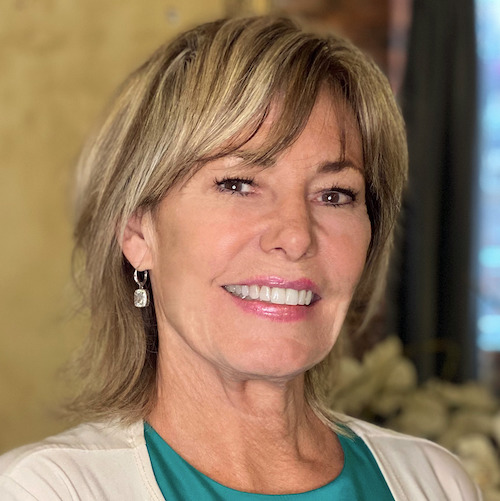

Not-for-profit senior living providers are beginning to reimagine their business models, but sometimes they do not go far enough.
Several of my clients are reading the book “Dual Transformation” by Scott D. Anthony, Clark G. Gilbert and Mark W. Johnson. It’s a solid read, and its message is important for senior living providers to heed.
Dual transformation is the art of creating a second, related business model that will take the place of the existing core business, but at the same time, streamlining and adapting the core business so that it thrives in parallel. Most providers are attending to the core business; it is the complementary new business model that some find challenging to get off the ground.
The basic idea of the bifurcated approach is to potentially disrupt your own business model before something else disrupts it first.
One senior living provider puts it this way: “Have we truly changed to position our organizations for the future, or have we been stuck in the recovery mode of post-COVID?”
Even if providers are upgrading campuses, imagining new wellness services and improving the food service delivery, these initiatives do not go far enough. Senior living operators must think more boldly.
The authors of “Dual Transformation” talk about the importance of simultaneously (A) improving an organization’s current product offering (core optimization) while developing (B) an offering or offerings that solve(s) a new but related problem(s), having the potential to become the next core business.
Many strategic plans I see being developed in our field focus on (A) transformation. In other words, optimizing and repositioning the core business model so it becomes more attractive to the current consumer and immediate prospects. The goal is to maximize cash flow and to ride the current wave of opportunity.
There is absolutely nothing wrong with this approach. In fact, it is imperative that this type of incremental innovation be carried out to meet evolving needs and improve revenue opportunities.
More unique is a focus on the (B) transformations, involving the creation of a new growth engine, based on an experimental trial and error mindset to build ancillary offerings that eventually could supplement or even replace (A) at some point in the future. Creation of profitable HCBS models, satellite campuses or a niche co-housing concept would fall into this category.
The approach here is analogous to skating where the puck will be in the future and finding the opportunity that will appeal to the boomers and Gen X customers. Value will come from simplifying the complex (for instance, offering a different type of entry fee or eliminating it altogether) or making the previously inaccessible accessible (such as a middle-market product that provides some aspects of life plan community living, or using a digital platform to reduce isolation and loneliness). Those are “white space” transformational opportunities, and responding to them will shape the future of our field.
The basic idea of the bifurcated approach is to potentially disrupt your own business model before something else disrupts it first.
The authors believe that category (B) hedges against extinction and philosophically might someday involve cannibalization of the core business. Yet, because (B) likely will not provide a significant amount of cash flow in its incubation stage, it is imperative that the organization keep its eye on two balls at one time, which is extraordinarily challenging to do. Even if a fantastic (B) idea is hatched, the leadership team has a tendency to default to a focus on (A), because transformation of both (A) and (B) is overwhelming to them. Or, possibly, (B) never takes off because it requires a resource investment that the organization’s board or leadership team is not willing to support due to fiscal conservatism and unwillingness to take a risk.
Generally speaking, risk is not a concept that the not-for- profit senior living sector feels comfortable with, as evidenced by the stagnant growth we are seeing. Operators of those senior living communities, buoyed by the sheer demographics of an aging population, are falsely lured into the idea that their current business model (A) will never be threatened by disruption. They are misguided in this notion. One only has to look at the examples of other industries to know this is true. Will our senior living organizations disrupt themselves as did Netflix, Disney and Amazon, or will they be doomed to repeat the fate of Kodak, Blockbuster, Polaroid and Borders?
Successful transformations require getting beyond the traditional strategic planning efforts. It is about taking the “long view” and finding the breakthrough innovation. Sometimes, the “plan” is there, but the momentum breaks down because of the risk adversity of the leadership team and boards. And importantly, it may require a different group of leaders with more aggressive mindsets to create and implement (B) innovations.
Ironically, purpose-driven organizations often are the ones, once they pull the trigger, that manifest the new growth engine well because of their focus on mission. (B) not only is meeting new consumer wants and needs but also extends organizational reach and impact. Mission-driven organizations are all about that. So why are the not-for-profit senior living providers lagging so far behind with their self-disruption?
Let me be clear: some extremely innovative not-for-profit senior living providers are carrying out an ambidextrous approach to their businesses. They are implementing (A) and (B) simultaneously. And those providers will be the winners in the future. They also also likely be the providers who will dominate the landscape 5 years from now.
“Ironically, purpose-driven organizations often are the ones, once they pull the trigger, that manifest the new growth engine well because of their focus on mission.”
That’s because not-for-profit sponsorship transitions are accelerating at a rapid pace. According to specialty investment bank Ziegler, almost 900 not-for-profit senior living communities have changed ownership and or sponsorship since 2015, with many more expected to come.
This rapid consolidation, along with not-for-profit closures (primarily skilled nursing facilities), has led to the emergence of more regional and national multi-sites. Some of the consolidation is due to the need for succession planning, some is due to financial distress, and some of it is due to a desire for greater scale.
The strong and well-funded not-for-profit organizations also are participating in a competitive bidding process with for-profit entities, according to Ziegler. The senior living field is changing rapidly, and the organizations that are hunkered down in survival mode are likely not going to be here in their current form by the year 2026.
4 things successful organizations are doing
Here’s what the survivors of tomorrow are doing well today:
Taking risk: They are doing their homework and figuring out their vision for the future. They take a strategic approach to risk and use their resources to align with others that add value to their portfolios. They are not sitting on all their cash hoping to ride out the storm. They are investing for the long-haul.
Creating proactive boards: They are loading up their boards with big thinkers who will support bold moves recommended by the leadership team to quickly take advantage of opportunities. Board members are invited to think generatively instead of rubber-stamping whatever is put in front of them. The CEOs are not afraid of the strategic questions; they invite those questions and view their board members as “thinking partners” who may spot new opportunities overlooked by the senior living professionals who are too close to the core business to see them. Hopefully, they also have considered term limits, have attracted more diverse board members from outside the field, and are compensating board members for their time and knowledge.
Collaborating: Instead of seeing their campuses as islands surrounded by moats, they are reaching out to multiple stakeholders and their greater communities to network and find intersections of opportunities. Leaders are well-networked, and they use those networks to vet new ideas and find partnerships that will fuel their growth. As an example, they are seeking out partners who are initiating Blue Zones, Age-Friendly Cities and the Villages network in their geographic markets.
Hiring different leaders: They hire leaders who are lateral thinkers, not linear thinkers; people who demonstrate what is known as a “fluid mindset” as opposed to a “fixed mindset.” Senior leaders who score as high “D” and “I” types on the DISC assessment. Hiring such individuals sometimes requires going outside the field to find those strategic thinkers and decisive leaders who are comfortable with ambiguity and “big-scale” change initiatives. They resist “marrying their own cousin” by not looking exclusively from within when they need to fill a critical leadership position.
Those who adopt an “adaptive leadership” approach that involves getting “on the balcony” and “off the dance floor” will rise to the top of the senior living world. It requires taking risk, stacking the board with big-picture thinkers, collaboration with outside networks and hiring a different type of team for the C-suite. Marking time, hunkering down and resisting change will result in obsolescence or being subsumed by a larger organization.
Now is the opportunity to aggressively find the next version of ourselves. The market is there. What are we waiting for?
Michele Holleran is founder and CEO of two firms: Holleran Consulting LLC, a full-service senior living research firm, and DeArment Consulting LLC, specializing in strategy, leadership and culture consulting services as well as board retreats and executive coaching. She can be reached at [email protected].
The opinions expressed in each McKnight’s Senior Living guest column are those of the author and are not necessarily those of McKnight’s Senior Living.
Have a column idea? See our submission guidelines here.


